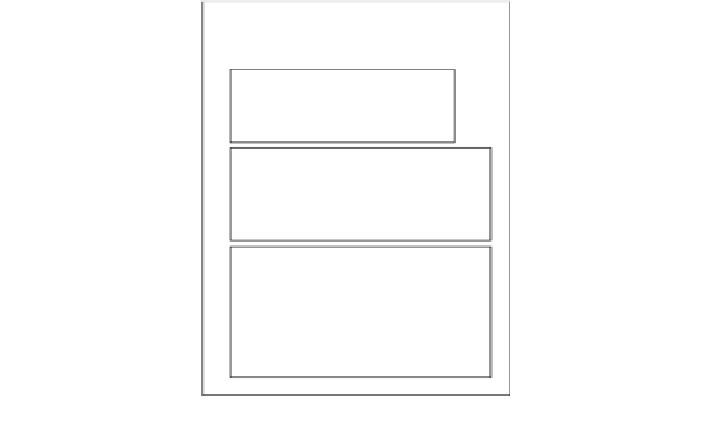Biomedical Engineering Reference
In-Depth Information
formulation introduced in Chapter 3. These three components are displayed in
Figure 5.1
, and are explained as follows:
a.
Design variables: In this case we seek to determine the joint profiles for the
human skeleton.
b.
Cost function: One or more cost functions are used to drive the behavior of
the motion.
c.
Constraints where any limitations on the motion or the interaction between the
human and the environment are imposed. However, in this case we shall also
scale the formulation introduced in Chapter 3 for posture prediction without
dynamics to include the equations of motion
Newton's laws will now be acting
on the entire motion to govern and subject any predictions to the laws of physics.
...
Figure 5.1
illustrates the three main components that formulate the predictive
dynamics problem at an optimization formulation.
For the system, both the motion and the forces that cause the motion are
unknown and treated as design variables in the optimization process. Equations of
motion are treated as equality constraints instead of their direct numerical integra-
tion. The optimization problem is usually a large-scale nonlinear programming
problem with many design variables and constraints. To solve the problem effi-
ciently, modern optimization methods that take advantage of the structure of the
problem are used.
The studied biosystem is represented as S and the corresponding mathematical
model as M. The general equations of motion for the model M are written as:
f ð
q
;
q
;
q
;
t
Þ
5τ
(5.1)
Predictive Dynamics
1. Determine:
Joint Profiles
2. Minimize:
Energy and Effort
3. Subject to:
— Joint limit
— Physical constraints
— Other constraints
—
Equations of motion
FIGURE 5.1
The three components involved in formulating the predictive dynamics problem.


Search WWH ::

Custom Search